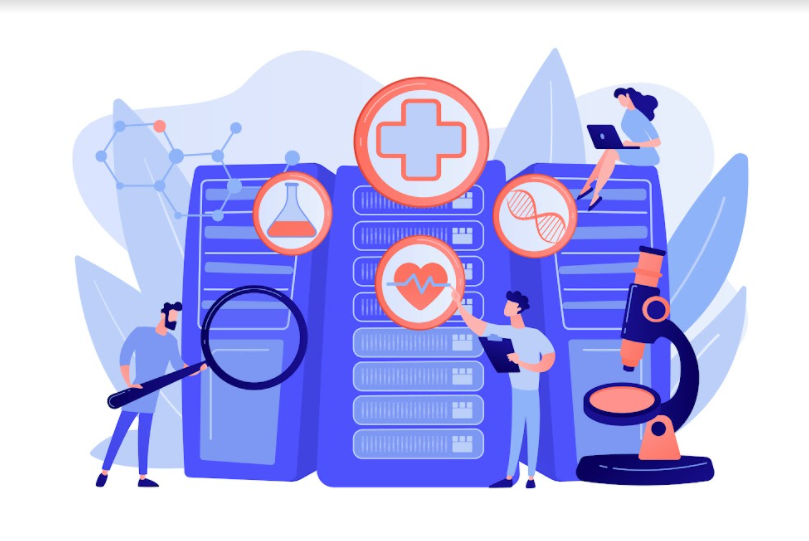The healthcare industry has a history of tentative innovation and slow adoption of new technology and processes.
However, with the onset of the COVID-19 pandemic, the healthcare tech sector has been forced to adopt a quick digital transformation to innovate how they provide quality patient care.
And 2022 is expected to strengthen the healthcare sector with technological advancements and innovations. That said, here are five key healthcare tech trends that will transform that whole healthcare industry.
- Big Data And Data Silos
Big data in healthcare refers to data collected from real-world sources and patient records.
This data can be used to help measure the success of a health product or service, inform and change medical practice, and provide a better picture of how an illness or a treatment impacts or could affect a patient population.
And in this highly digitized world, the amount of healthcare data accumulated and data sources used by healthcare organizations will only explode rapidly in years. The collection methods will also become more diverse, and the demand for tech to monitor and collect healthcare data is expected to soar.
Also, medical service providers are now looking for modern platforms such as metadata repository and data fabrics to obtain and manage large volumes of distributed and structured data for analysis.
You can also expect to see a transformation in how data is processed and analyzed, as advancements in artificial intelligence, automation, and machine learning provide new ways to explore patient data.
- Internet Of Medical Things (IoMT)
Also known as healthcare IoT, IoMT refers to having a connected infrastructure of health care services and systems.
Today’s internet-connected devices and improving computing systems have made it possible. Poised to evolve the future of care, IoMT allows healthcare organizations to lower care costs, improve efficiencies and drive better outcomes for patient care.
Examples of IoMT include patients’ wearable health devices that send information to caregivers and remote patient monitoring for people with long-term or chronic conditions.
With their ability to collect, transmit and analyze health data, IoMT devices are rapidly changing healthcare delivery, playing a central part in preventing and tracking chronic illnesses and ultimately ensuring the quality of life.
- Precision Medicine
Breakthroughs in genomics and gene editing have pioneered and accelerated the development of precision medicine.
Gene editing refers to the process of influencing specific traits inherited by new living cells when new proteins form via cell divisions. These traits (phenotypes) govern the longevity of your cells, their ability to survive against illness or injury, and other factors. By manipulating phenotypes through gene-editing techniques, scientists can create treatments for killer diseases, known as precision medicine.
This innovation means creating drugs and treatments customized to match the genetic profile of a specific patient, making them more effective and less likely to cause side effects.
However, precision medicine also encompasses cutting-edge informatics technologies to effectively capture and analyze a patient’s real-life data that includes lifestyle, diet, and environmental data.
In 2022, innovative projects will emerge in this healthcare niche, bringing the healthcare industry closer to the universal adoption of precision medicine.
- Telehealth
Telehealth or telemedicine is not a new concept. However, it was underutilized before and gained universal traction during the pandemic.
With the increase in digitized communication channels, telehealth has emerged as a new means of exchanging medical information. Using the internet, video conferencing apps, and other communication technologies, telehealth allows for long-distance checkups and education for patients and healthcare professionals.
Last year, telehealth became standard practice and will only continue to become the norm in 2022. Advanced clinics are already providing virtual consultations with their patients. And with the introduction of 5G wireless technology, telehealth is open to more opportunities for fast growth and universal adoption in the years to come.
- Nanomedicine
You’ve probably only seen this in sci-fi movies; however, nanotech is slowly becoming a reality.
Before 2021 ended, scientists created tiny, self-replicating organic robots (xenobots). Although it will need more research, it’s safe to assume that 2022 is the start of revolutionary experiments in the field of nanomedicine.
Nanomedicine refers to the use of nanoscale (or microscopic) objects and materials such as nanoelectronics devices, biocompatible nanoparticles, and nanorobots for specific medical manipulations and purposes such as treatment or diagnosis.
One exciting possible application is that nanorobots are injected into a patient’s blood vessels and potentially hunt down viruses or cancer cells.
This technology is expected to successfully fight back numerous oncologic, genetic, or auto-immune diseases on a cellular level.
Conclusion
And there you have it! These are some of the most impactful emerging technologies in the healthcare setting.
With the current pace of technological advancement in this modern world, these healthcare techs and other innovations will hopefully become a part of the world to ensure a healthier future for generations to come.

